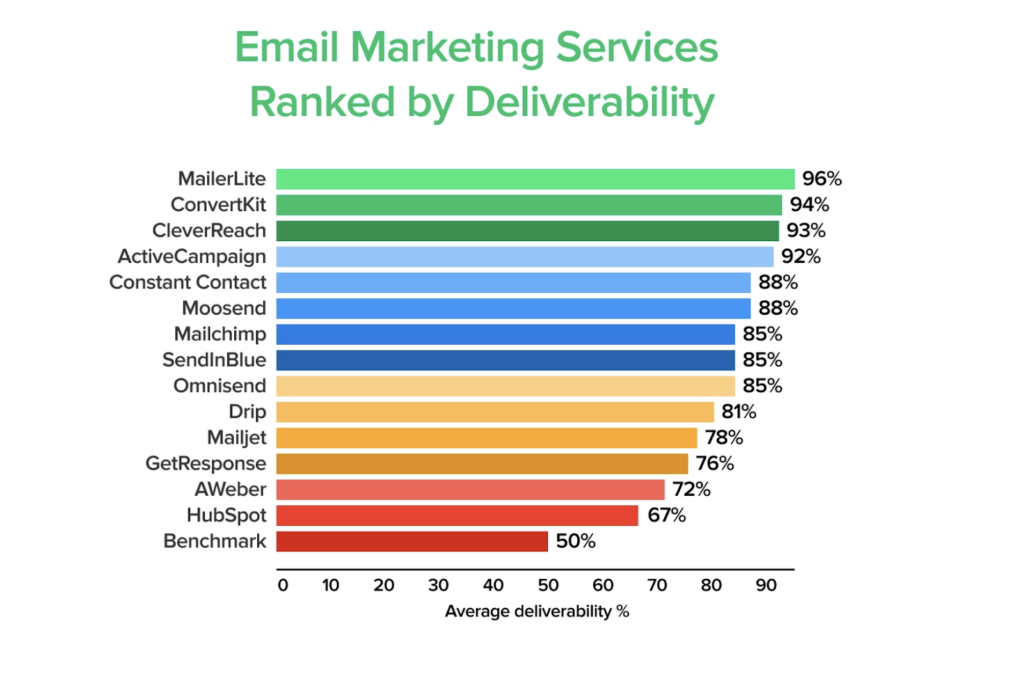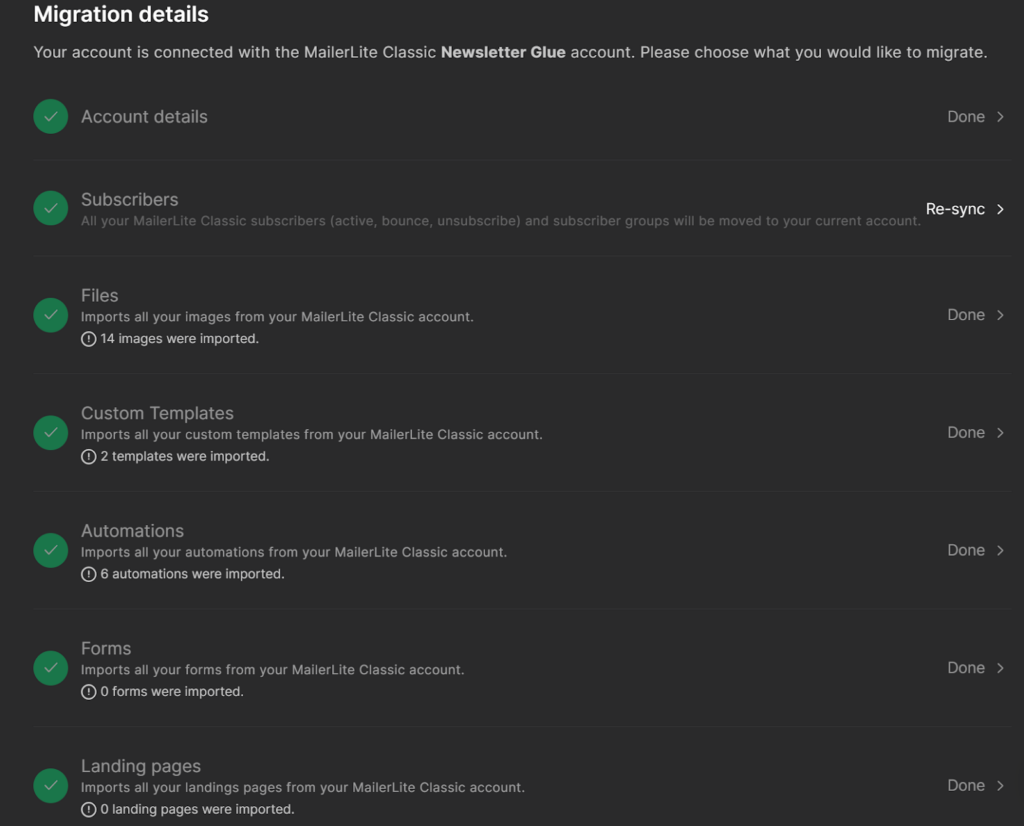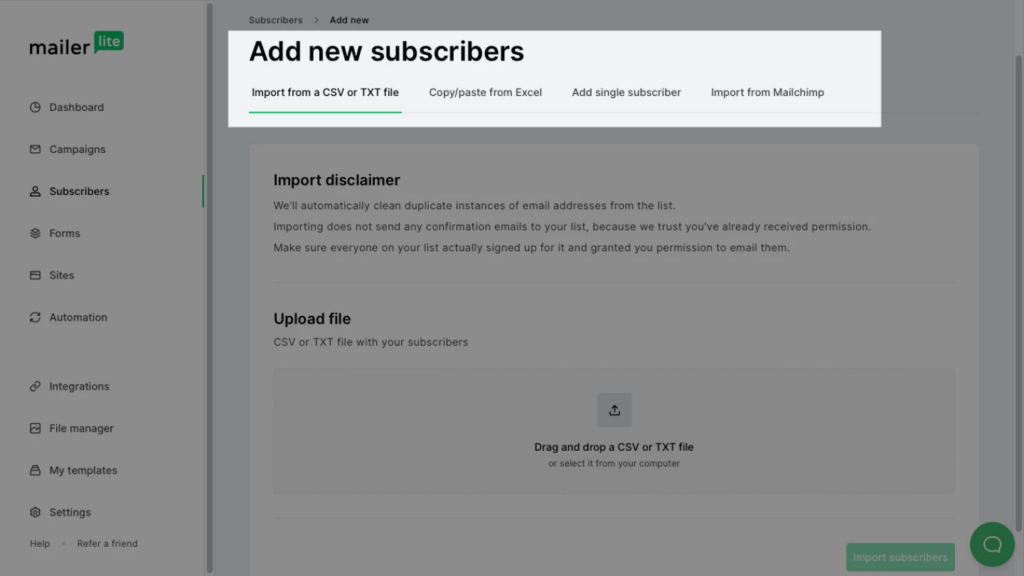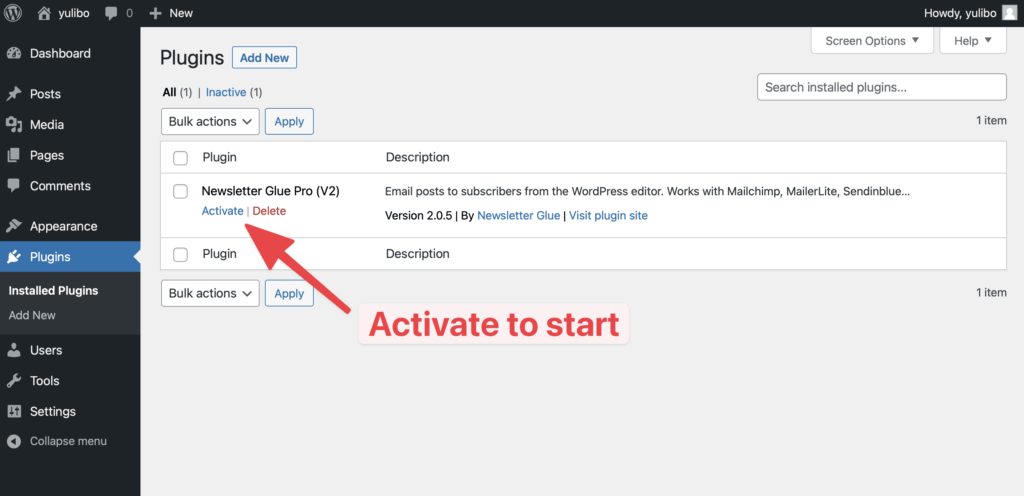Have you outgrown your existing email service provider (ESP)?
Email marketing plays a vital role in creating and maintaining strong customer relations. When you find that your business growth is limited due to your ESP’s current capabilities (such as a lack of automation and personalisation), it might be time to move on.
Whether you’re in the market for a new ESP with more advanced features, better deliverability, or cost-effectiveness, read on for a step-by-step guide to ESP migration. Learn the information you need to seamlessly migrate from one email service provider to another.
What are the common reasons for ESP migration?
There are a few reasons you might want to switch from your existing ESP, such as:
- Cost
- Poor service
- Limited functionality
- Ease of use
If this resonates with you, it’s understandable that you might want to look for other options on the market.
You might even need your ESP to handle larger email lists, or maybe you’d like to create a variety of email templates for marketing campaigns. Migrating your ESP could take care of this.
What features to look for in the new email service provider?
Planning an ESP migration means choosing the best new email service provider for your business. Here are a few considerations to help you decide.
Email deliverability
Arguably the most important factor, strong email deliverability is essential.
Your new ESP must be able to reliably deliver emails to your subscribers’ inboxes. Even the most visually creative email newsletters may go unnoticed if emails don’t arrive. Undelivered emails are potentially missing opportunities to engage with your target audience.
A positive sender reputation derives from time spent practising good sending practices and complying with email industry standards. These include avoiding purchasing email lists or adding contacts without prior consent. This will help to ensure your emails don’t hit the spam folder.

Ease of use
Intuitive features combined with a user-friendly interface can have a positive impact on the email campaign creation process.
Look for an ESP provider that enables you to create tailored email campaigns with ease. Features such as customisable templates, simple workflows, and drag-and-drop email builders add to a positive experience.
Customer support
Because ESP migration can come with a steep learning curve, customer support is high up on the must-have list.
Ask if potential ESP providers offer 24/7 support, including international assistance if your business operates across different time zones. Wikis and online documentation are ideal for your team to find answers to frequently asked questions and learn how to use features.
Analytics
Robust analytics capabilities should be one of your key priorities.
An intuitive analytics dashboard should offer clear and visually appealing data. This helps you see your email campaign performance metrics and make data-driven decisions. You can also easily see your email open, bounce, and CTR rates – enabling you to evaluate the success of each email and to tailor it for future use.
Scalability
If you expect your business to grow and increase email marketing tactics, an ESP with scalability potential is what you need.
Scalability refers to the ESP’s ability to accommodate larger subscriber lists and increasing email volumes as your company’s needs evolve.
Marketplace and API
Marketplace and API integrations enhance both the flexibility and functionality of your ESP.
For example, integration of third-party tools helps you to add CRM systems and eCommerce platforms. All your data is in one place and you can manage all your contacts efficiently.
Pricing
Choose an ESP pricing model that suits your business.
You don’t want to pay for additional subscribers until you need to or have features you’re never going to use. A subscriber-based option allows you to add users as your business grows, and scale back if necessary.
Now that we know what important features to look for in a new ESP, let’s look at how to prepare for the ESP migration.
Preparing for the ESP migration process
A smooth transition comes from proper ESP migration planning.
Here’s what you need to do:
Clean your email list
Remove invalid and inactive email addresses to ensure you are targeting your efforts with an engaged audience. This action helps improve deliverability rates, too. Some ESP providers will do this for you.
Segment your most engaged subscribers
Create targeted segments based on subscriber preferences and behaviour patterns. This will allow you to build a ramp-up plan and send early indications of an engaged audience to mailbox providers. The more people who open and reply, the more trust your new ESP will gain on your list.
Prepare a migration timeline
Develop a detailed timeline for your ESP migration. Consider including tasks, deadlines, and specific milestones for an efficient transition to your new ESP.

Prepare a list of forms to replace
All of your forms must go with you, so identify and document all the current forms and sign-up processes that integrate with your current ESP. Doing so ensures you’ll have a much easier time replacing or reconfiguring them during the migration.
Email authentication
Your new ESP should both support and enforce authentication protocols like DMARC, SPF, and DKIM. Adherence helps verify your email authenticity and guards against cybercrime efforts like phishing.
Create a communication strategy
Take the time to let your subscribers know about your ESP migration to minimise confusion and deliverability issues.
ESP migration: A step-by-step guide
Once you’ve prepped and planned your ESP migration, it’s time to begin. Here are 7 simple steps to follow.
1. Verify your domain
Every ESP uses different DNS records, so you’ll need to authenticate your chosen ESP’s domains by updating your DNS settings.
To get started, your new ESP will be able to provide you with their unique DNS settings. You’ll then need to update your domain records, like SPF and DKIM, to authenticate your domains with your new ESP. update records like SPF and DKIM to verify your domain.
2. Import your subscribers
Transfer your existing subscriber list to the new ESP. Be sure to properly segment your email list contacts, practise good list hygiene, and comply with permission-based sending rules.

3. Connect your integrations
Line up your CRM system with your new ESP to sync subscriber data, personalise email campaigns and track customer interactions. If you manage your email content through a CMS, integrate it to streamline content updates and ensure consistency across your marketing channels.
4. Upload your files
Add any current images, files, and attachments to the new ESP’s storage system. This will help you to access what you need for your email campaigns quickly.
5. Import your templates
Move across your email templates to keep your brand identity consistent and make it easier to create email newsletters and campaigns post-migration.
6. Rebuild your automation
Recreate your automated workflows to continue delivering timely and tailored subscriber communications.
7. Warm up your domain
When you switch ESP, you don’t have a reputation with the mailbox providers. And if you go in and send emails to your full list out, it is seen as very risky by mailbox providers. This will make them place a lot of your emails in the spam folder.
According to Alyssa Dulin, the head of Deliverability at ConvertKit, it’s to create a ramp-up plan and start with whoever you can think of as your most engaged subscribers.
What this means is let’s say you have an email list of 50k subscribers and you’re migrating from Mailchimp to ActiveCampign. What you want to do is send from both email service providers at the same time. You might keep sending 45k emails from Mailchimp and start with 5k emails from ActiveCampaign. Then for your next newsletter, you might send 40k emails from Mailchimp and 10k emails from ActiveCampaign. And you’ll keep ramping up the number of emails you send from ActiveCampaign until you’re sending all your emails from ActiveCampaign and none from Mailchimp.
This sends a positive signal to mailbox providers and they will start to trust your emails.
Monitoring and post-migration review
Post-migration, it’s important to monitor your email performance rates and deliverability metrics. This proactive approach assists in easier evaluation of how well your ESP migration went.
For example, analysing your key metrics compares whether there have been improvements or potential challenges in email deliverability and engagement. Be sure to speak with your team and subscribers post-migration to positively iterate on your email marketing strategies.
Wrapping Up: Ensuring ESP migration success
A successful ESP migration needs careful preparation, a focus on subscriber engagement and maintenance of sender credibility.
By verifying your domain, properly importing subscribers, and connecting your existing integrations, you set the stage for a smooth transition. Once your new ESP is in place, you can move forward to create even better email campaigns to drive email traffic to your website.
ESP Migration FAQs
How much does ESP migration cost?
The cost of an ESP migration can vary widely. It depends on several elements, such as the size of the email list, the number of email templates and campaigns, and the email setup complexity. Other considerations are the new ESP’s specific features and services.
Typically, the most significant cost involved in ESP migration is the subscription fees. ESP providers work from different pricing models – such as monthly plans, pay-as-you-go, or subscriber-based options. The cost will ultimately come down to the size of the email list and ESP plan features. We cover the most cost-effective ESPs in our ESP guide.
You might choose to enlist the help of an ESP migration expert. ESPs like MailerLite provide lists of certified experts who can help you with the entire migration process. Hourly rates range from $30 to $90.
What challenges might arise during an ESP migration?
Common challenges during an ESP migration include data integrity and deliverability issues. To mitigate these, it’s essential to migrate data accurately without any loss or corruption. The new ESP must have robust deliverability rates so emails are not delivered to spam folders.
The new ESP must also integrate with existing tools and systems for a seamless migration.
How long does an ESP migration usually take?
Every ESP migration is different due to variances such as the email infrastructure complexity and the volume of data. Smaller businesses can expect to complete the migration within just a couple of hours, but setup will take much longer for larger organisations. By following our steps above, you’ll be able to complete the process as efficiently as possible.


